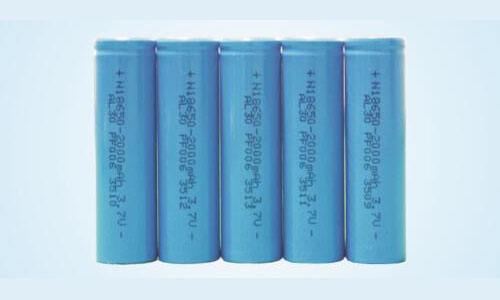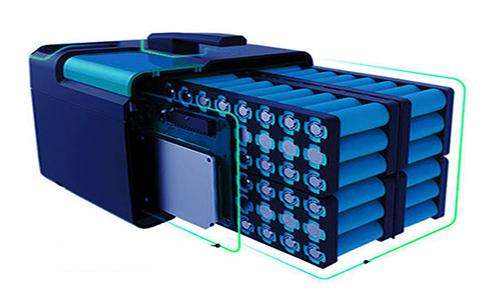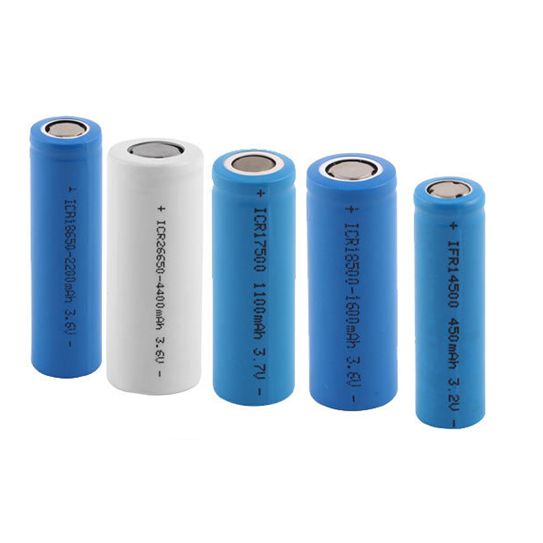About the Seven Advantages and Five Disadvantages of Lithium Iron Phosphate Battery
May 08, 2019 Pageview:2731
The full name of lithium iron phosphate battery is lithium iron phosphate lithium ion battery. Because its performance is particularly suitable for power applications, the word "power" is added to its name, namely lithium iron phosphate power battery. Some people also call it "Lithium iron power battery."

Working principle
The lithium iron phosphate battery is the lithium ion battery using lithium iron phosphate as a positive electrode material. The positive electrode materials of lithium ion batteries mainly include lithium cobalt oxide, lithium manganese oxide, lithium nickel oxide, ternary materials, lithium iron phosphate, etc. Among them, lithium cobalt oxide is the positive electrode material used in many lithium ion batteries.
Significance
In the metal trading market, cobalt (Co) is the most expensive metal, and its storage amount is small. Nickel (Ni) and manganese (Mn) are relatively cheap, while iron (Fe) is stored in a large amount. The price of the cathode material is also consistent with the price of these metals. Therefore, a lithium ion battery made of LiFePO4 as positive electrode material should be relatively inexpensive. Another feature of it is that it is environmentally friendly and non-polluting.
The requirements for rechargeable batteries are: high capacity, high output voltage, good charge and discharge cycle performance, stable output voltage, high current charge and discharge, electrochemical stability, and safe application (no overcharge, over discharge, and short circuit which may cause burning or exploration), wide operating temperature range, non-toxic or less toxic, no pollution to the environment. Lithium iron phosphate battery using LiFePO4 as positive electrode has good performance on these requirements, especially in large discharge rate (5~10C discharge), stable discharge voltage, safety (no combustion, no explosion), and service life (cycle number). It is the best high current output power battery and good for the environment.
Structure and working principle
LiFePO4 is used as the positive electrode of the battery. It is connected to the positive electrode of the battery by aluminum foil. There is a polymer separator in the middle. It separates the positive electrode from the negative electrode, which the lithium ion can pass but the electron e- cannot. The right side is composed of carbon (graphite). The negative electrode of the battery is connected by a copper foil to the negative electrode of the battery. Between the upper and lower ends of the battery is the electrolyte of the battery, and the battery is sealed hermetically by a metal casing.
When the LiFePO4 battery is charging, the lithium ion in the positive electrode migrates toward the negative electrode through the polymer separator; during the discharging period, the lithium ion in the negative electrode migrates toward the positive electrode through the separator. Lithium-ion batteries are named after the lithium ions migrate back and forth during charging and discharging.
Main performance
The nominal voltage of the LiFePO4 battery is 3.2V, the termination charging voltage is 3.6V, and the termination discharge voltage is 2.0V. Due to the difference of quality and process of the positive and negative materials and electrolyte materials, there will be also some differences in their performance. For example, the same model (standard battery with the same package) has a large difference in battery capacity (10% to 20%).
It should be noted here that lithium iron phosphate power batteries produced by different factories may have some differences in various performance parameters; in addition, some battery performances are not included, such as battery internal resistance, self-discharge rate, charge and discharge temperature, etc.
Lithium iron phosphate power batteries have large differences in capacity and can be divided into three categories: small capacity is under fraction milliampere per hour, medium capacity reaches tens of milliampere per hour, and large capacity is above hundred milliampere per hour. There are some differences in the same parameters for different types of batteries.
Overdischarge till zero voltage test:
The STL18650 (1100mAh) lithium iron phosphate power battery has been used for over-discharge to zero voltage test. Test conditions: A 1100 mAh STL 18650 battery was fully charged at a charging rate of 0.5 C, and then discharged at a discharge rate of 1.0 C until the battery voltage was 0 C, then divide the batteries in 0V into two groups: one is stored for 7 days, the other is stored for 30 days; after the storage expires, fill with a charging rate of 0.5 C, and then discharge with 1.0 C. Finally, compare and find out the differences between their zero voltage storage periods.
The result of the test is that the battery has no leakage after 7 days of zero voltage storage, and the performance is good, the capacity is 100%; after 30 days of storage, there is no leakage, the performance is good, the capacity is 98%; after 30 days of storage, the battery is further charged and discharged for 3 times. The capacity is restored to 100%.
This test shows that even if the lithium iron phosphate battery is over-discharged (even to 0V) and stored for a certain period of time, the battery will have no leakage or be damaged. This is a characteristic that other types of lithium-ion batteries do not have.

Advantages of lithium iron phosphate battery
1. Improvement of safety performance
The P-O bond in the lithium iron phosphate crystal is stable and difficult to decompose, and does not collapse or heat like a lithium cobalt oxide or forms a strong oxidizing substance even at a high temperature or overcharge, thus it has good safety performance. It has been reported that in the actual operation, a small part of the sample was found to have a burning phenomenon in the acupuncture or short circuit test, but there was no explosion event. During overcharge experiment, when charge at a high voltage that was several times higher than the self-discharge voltage, it was found that there was still explosion phenomenon. Even so, its overcharge safety performance has been greatly improved compared to the ordinary liquid electrolyte lithium cobalt oxide battery.
2. the improvement of service life
The lithium iron phosphate battery refers to a lithium ion battery using lithium iron phosphate as a positive electrode material.
The long-life lead-acid battery has a cycle life of about 300 times, and the highest is 500 times. The lithium iron phosphate power battery has a cycle life of more than 2,000 times, and the standard charge (5 hour rate) can be used up to 2000 times. The cycle of the same quality lead-acid battery is "new half year, old half year, for more half a year after maintenance", up to 1~1.5 years, while lithium iron phosphate battery is used under the same conditions, the theoretical life will reach 7~8 years. All in all, the performance price ratio is theoretically four times more than that of lead-acid batteries. High-current discharge can be quickly charged and discharged with high current 2C. Under the special charger, the battery can be fully charged within 40 minutes with 1.5C charging, and the starting current can reach 2C, but the lead-acid battery has no such performance.
3. high temperature performance
The peak temperature of lithium iron phosphate can reach 350 ° C -500 ° C, while lithium manganate and lithium cobalt oxide are only around 200 ° C. With wide operating temperature range (-20C--75C), high temperature resistance, lithium iron phosphate electric heating peak up to 350 ° C -500 ° C, while lithium manganate and lithium cobalt oxide only around 200 ° C.
4. large capacity
The rechargeable battery usually works under the condition that it is often fully charged but without overcharge, its capacity is rapidly lower than the rated capacity. This phenomenon is called the memory effect. Nickel-metal hydride and nickel-cadmium batteries have memory effect, but not lithium iron phosphate batteries. No matter what state the battery is in, it can be used while charging, and recharged not only after fully discharge.
6. light weight
The volume of the lithium iron phosphate battery of the same specification capacity is 2/3 of the volume of the lead-acid battery, and the weight is 1/3 of the lead-acid battery.
7. environmentally friendly

Lithium iron phosphate battery is generally considered to be free of any heavy metals and rare metals (Ni-MH batteries require rare metals), non-toxic (SGS certified), non-polluting, passed European RoHS regulations-is an absolute green battery certificate. Therefore, the reason why lithium ion batteries are favored by the industry is due to the environmental considerations. Therefore, the battery has been included in the “863” national high-tech development plan during the “fifteenth national congress” period, and has become a national key support and encouragement development project. With Chinese accession to the WTO, the export volume of electric bicycles in China will increase rapidly, and electric bicycles entering Europe and America have been required to be equipped with non-polluting batteries.
However, some experts said that the environmental pollution caused by lead-acid batteries mainly occurred in the production process and recycling process of enterprises. In the same way, lithium ion batteries belong to new energy industry, but it cannot avoid the problem of heavy metal pollution. Lead, arsenic, cadmium, mercury, chromium, etc. may be released into dust and water during processing of metal materials. The battery itself is a chemical substance, so there may be two kinds of pollution: one is the industrial outlet sediment during production process, the other is the battery pollution after the scrap.
Lithium iron phosphate batteries also have their disadvantages: for example, poor low temperature performance, low tap density of positive electrode materials, and the capacity of lithium iron phosphate batteries with equal capacity are larger than lithium ion batteries such as lithium cobalt oxide, so there is no advantage in micro batteries. When used in a power battery, a lithium iron phosphate battery, like other batteries, needs to face battery consistency problems.
Disadvantages of lithium iron phosphate battery
Whether a material has potential for application development, in addition to focusing on its advantages, is more critical whether the material has fundamental defects.
Lithium iron phosphate is widely used as a positive electrode material for power type lithium-ion batteries in China. Market analysts of government, scientific research institutions, enterprises and even securities companies are optimistic about this material as the development direction of power lithium-ion batteries. There are two reasons for this situation: First, the impact of the US research and development direction-the United States Valence and A123 company first used lithium iron phosphate as the cathode material for lithium-ion batteries. Secondly, there is no preparation of lithium manganate materials with good high temperature cycling and storage properties produced for power type lithium-ion batteries. However, lithium iron phosphate also has fundamental defects that cannot be ignored. The main points are as follows:
1. During the sintering process in the preparation of lithium iron phosphate, iron oxide is likely to be reduced to iron under a high temperature. Iron can cause micro short circuit of the battery, which is the most taboo substance in the battery. This is also the main reason why Japan has not used this material as a positive electrode material for a lithium-ion battery.
2. There are some performance defects in lithium iron phosphate, such as low tap density and compacted density, resulting in low energy density of lithium ion batteries. Low-temperature performance is poor, even if after nanocrystallization and carbon coated, this problem still cannot be solved. Dr. Don Hillebrand, director of the Center for Energy Storage Systems at Argonne National Laboratory, talked about the low-temperature performance of lithium iron phosphate batteries. He used terrible to describe it. Their lithium iron phosphate battery test results indicate that lithium iron phosphate battery cannot be used in and electric car at low temperature (Below 0 °C). Although some manufacturers claim that the lithium iron phosphate battery has a good capacity retention rate at low temperatures, it is in the case of a small discharge current and a low discharge cut-off voltage. In this situation, the device simply cannot even work.
3. The preparation cost of the material and the manufacturing cost of the battery are high, the battery yield is low, and the consistency is poor. Although the nanocrystallization and carbon coating of lithium iron phosphate improve the electrochemical performance of the material, they also bring other problems such as a decrease in energy density, an increase in synthesis cost, poor electrode processing performance, and environmentally demanding problems. Though the chemical elements Li, Fe and P in lithium iron phosphate are abundant and the cost is low, the cost of the prepared lithium iron phosphate product is high, even if except the previous research and development cost, the process cost of the material and the cost of preparing the battery will still make the cost of the final unit of stored energy higher.
4. Poor product consistency. At present, there is no domestic lithium iron phosphate material factory that can solve this problem. As for material preparation, the synthesis reaction of lithium iron phosphate is a complex heterogeneous reaction, which has solid phase phosphate, iron oxide and lithium salt, a carbon precursor and a reducing gas phase. It is difficult to ensure the consistency of the reaction during this complex reaction process.
5. Intellectual property issues. At present, the basic patent for lithium iron phosphate is owned by the University of Texas, and the carbon coated patent is applied by Canadians. These two basic patents cannot be circumvented. If the cost of the patent is calculated, the cost of the product will be further increased.
In addition, from the experience of research, development and production of lithium-ion batteries, Japan is the first commercialized country of lithium-ion batteries, and has always occupied the high-end lithium-ion battery market. Although the United States is advanced in some basic research, there is still no large-scale lithium-ion battery manufacturer. Therefore, it is more reasonable for Japan to modify lithium manganate as a positive electrode material for a power-type lithium ion battery. Even in the United States, lithium iron phosphate and lithium manganate are used as the cathode materials for power-type lithium-ion batteries, and the federal government also supports the development of these materials. Based on the problems above of lithium iron phosphate, it is difficult to be widely used as a positive electrode material for a power type lithium ion battery in the field such as new energy vehicles. If it can solve the problem of high temperature cycle and poor storage performance of lithium manganite, rely on its advantages of low cost and high rate performance, it will have great potential in the application of power lithium-ion batteries.
Leave Message
Hottest Categories
-
Hottest Industry News
-
Latest Industry News









